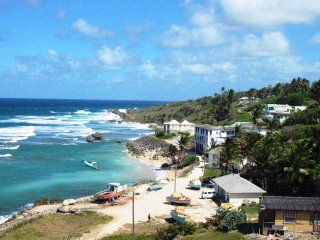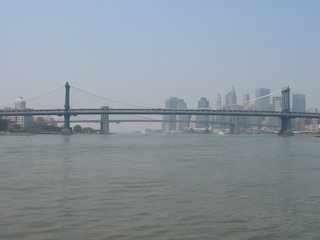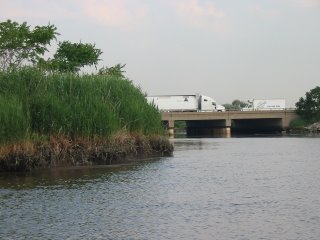 into productive coastal access with the assistance of large grants from New York State and the City via the Economic Development Corporation. Creating the Park will add a great asset to the community of Sunset Park and continue the trend of increased access and parks on the waterfront states the NY Times. JB
into productive coastal access with the assistance of large grants from New York State and the City via the Economic Development Corporation. Creating the Park will add a great asset to the community of Sunset Park and continue the trend of increased access and parks on the waterfront states the NY Times. JBMay 30, 2006
By Joseph P. Fried
In its latest effort to reclaim waterfront land for recreation, New York City plans to turn a half-mile stretch of contaminated landfill and crumbled piers in the Sunset Park section of Brooklyn into a park with panoramic views of the harbor and the Manhattan skyline.
The landfill was created in the 1970's, when the city planned to convert the site, which it owns, into a cargo terminal. The city halted the landfill work in 1978, though, when it learned that the private contractor had allowed questionable material to be used.
 Investigators later found that elevated levels of arsenic, lead and other hazardous material were in the oil sludge, industrial waste water and other substances put in the landfill.
Investigators later found that elevated levels of arsenic, lead and other hazardous material were in the oil sludge, industrial waste water and other substances put in the landfill. There has been no activity since the landfill work was stopped, and the entire half-mile stretch has been fenced off since at least the early 1980's.
The $36 million plan to correct the environmental hazards and remove the collapsing piers — and to create ball fields, picnic and fishing areas and possibly an environmental education center — was welcomed by Sunset Park residents interviewed last week.
"It's only going to help the neighborhood," Alex Plasencia, who has lived in Sunset Park for 59 of his 63 years, said near his home on Fourth Avenue and 44th Street, four blocks away. The site runs from 43rd to 51st Streets, between the waterfront and a large complex of buildings and warehouses known as Bush Terminal.
Mr. Plasencia, a retired truck driver, recalled his boyhood in the neighborhood in the 1950's. "I used to swim off the pier on 53rd Street," he said.
Candida Villanueva, 56, standing in front of her home of two decades on 43rd Street between Second and Third Avenues, said, "It will be better for it to be a park instead of all that mess."
Once completed, the park could cost her some of the quiet atmosphere she has now. The plan calls for 43rd Street to be one of two access streets to the park. "Nobody comes down here now," she said.
That is because the side streets between the water and Third Avenue have more industrial and commercial tenants than residents. There is much less pedestrian traffic on those side streets than on the streets east of Third Avenue, where most of Sunset Park's working-class population lives. The elevated Gowanus Expressway travels above Third Avenue.
Jeremy Laufer, district manager of Community Board 7, which includes Sunset Park, said the public's only access to the two miles of waterfront in Sunset Park now is a pier at 58th Street, which serves as a terminal for a ferry to Lower Manhattan.
The plan for more waterfront access here follows projects in recent years that have created a ribbon of new parkland along the Hudson River in Manhattan, and plans for parks in other largely inaccessible shoreline areas of Brooklyn, near the Brooklyn Bridge and in Williamsburg and Greenpoint.
Read more:
http://www.nytimes.com/2006/05/30/nyregion/30sunset.html
New York State DEC Information on Site:
http://www.dec.state.ny.us/website/der/projects/bush/









